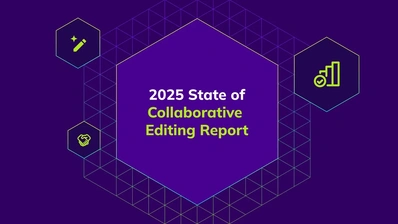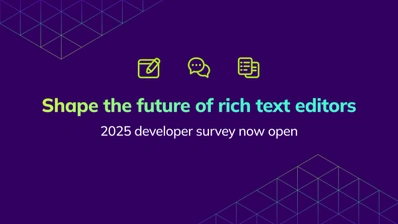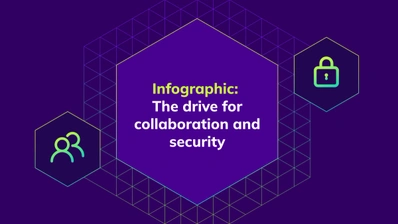The State of Collaborative Editing: How Rich Text Editors Are Shaping Modern Applications
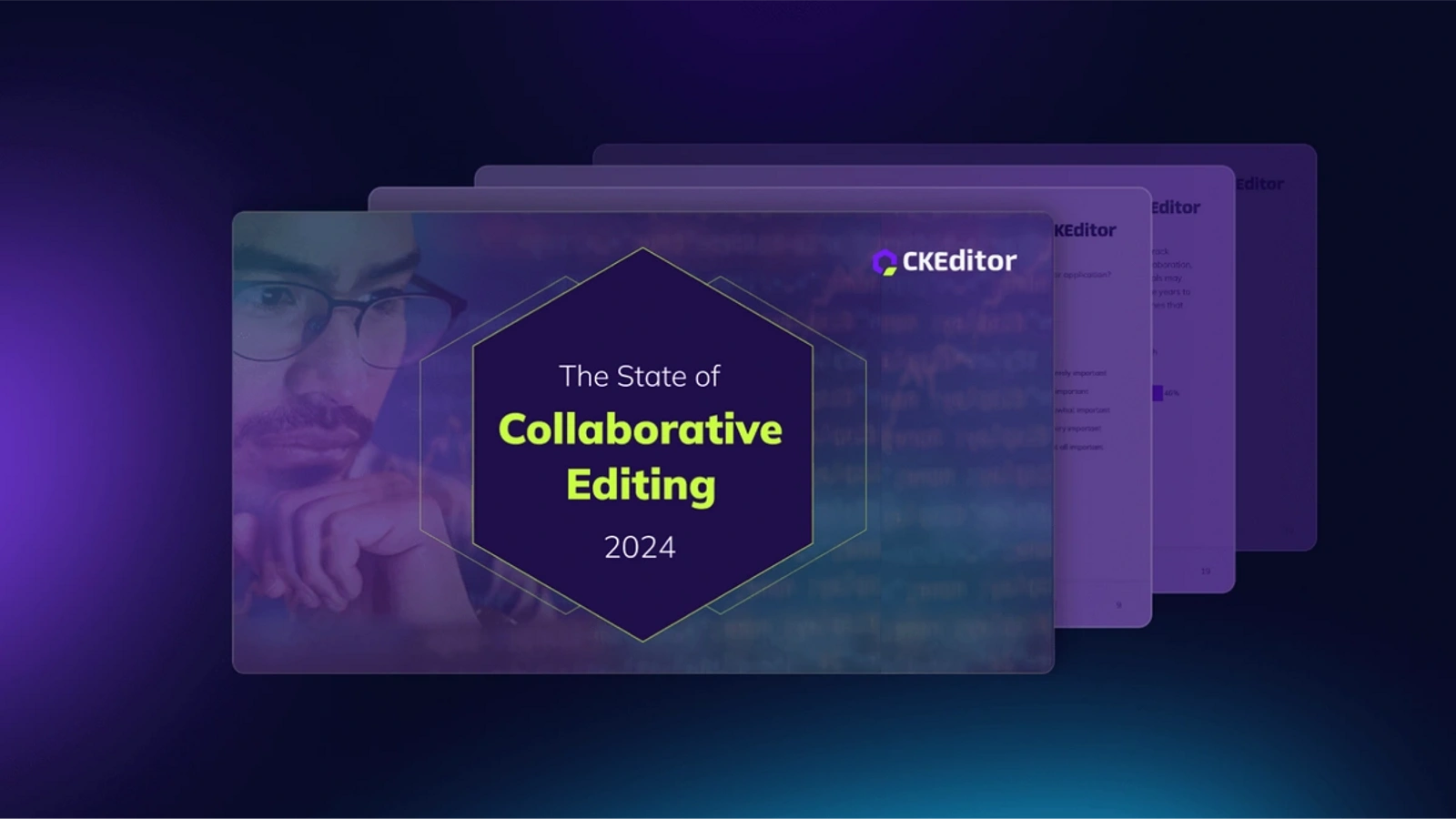
In just a few short years, the workplace has undergone a profound transformation. Teams that once worked side by side found themselves separated by miles. Video meetings replaced in-person collaboration, and quick glances to check a coworker’s availability were replaced with chat messages. Even now, while some have returned to the office, many continue to embrace remote work, and collaboration tools have become integral to our daily workflows. Whether you’re working synchronously or asynchronously, these tools are now a fundamental part of how teams function and communicate. The Full Report detailing this transformation is available now.
Collaboration should be straightforward in today’s digital-first world. Cloud computing has made file sharing simple, and apps like Slack and Microsoft Teams have streamlined communication for distributed teams. However, while these tools set high expectations for seamless experiences, collaborative editing remains an area that has not fully caught up. Many organizations still rely on outdated methods like emailing documents or manually passing files between team members—approaches that don’t reflect the potential of modern technology.
The complexity of developing collaborative features, such as resolving editing conflicts or tracking changes, is not trivial. It requires a high level of technical sophistication, and organizations that do not offer these functionalities within their applications risk being left behind. Collaborative features have become a requirement, and application developers must integrate them to keep up with user expectations.
CKEditor, a leader in rich text editing solutions, recently conducted its annual global survey, revealing important insights into how companies view collaborative tools. The findings underscore the growing importance of collaboration in the workplace and how rich text editors (RTEs) play a pivotal role in enabling seamless content creation and editing.
The Collaborative Editing Landscape
The Importance of Rich Text Editors
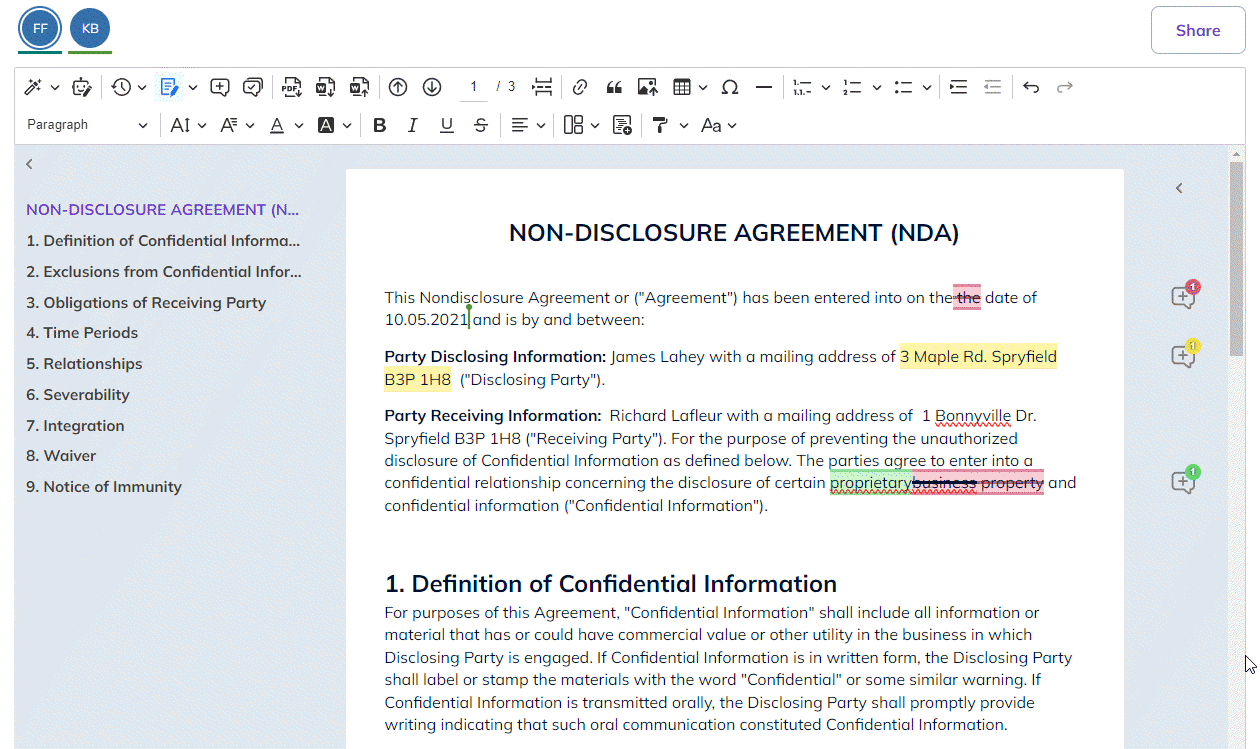
Modern applications are designed to help users get things done quickly and efficiently. Whether in communication or content creation, speed is critical. It’s no surprise that 71% of survey respondents in this year’s report said a rich text editor (RTE) is extremely or very important to their application.
However, simply including an RTE isn’t enough. Users expect rich, flexible features that are easy to understand and seamlessly integrated into the app. Offering incomplete toolsets or features with a steep learning curve can create friction and hurt user adoption. Collaboration features, in particular, are critical to meeting these demands.
While not every app requires advanced features like co-editing or track changes, only 13% of respondents said that collaboration features were unimportant. Nearly half rated them as extremely or very important, signaling that these functionalities are becoming essential.
The Role of Collaboration in RTEs
As teams demand better ways to work together, more than 40% of those surveyed said their user base shows significant interest in collaboration tools. These features go beyond simple content editing—they enable teams to work asynchronously or in real time, no matter where they are located.
Despite these demands, not every application has prioritized collaboration. 31% of survey respondents didn’t feel collaboration tools were necessary, and 26% found them only somewhat important. For those that do place a high value on collaboration, though, the need is urgent. More than a third of these respondents have already implemented collaboration features. Interestingly, an even greater number of respondents are on the cusp of adding collaboration features into their applications. Those who aren’t ready to offer things like track changes, comments, and so forth are in the minority.
The message is clear: If your users want to collaborate, now is the time to act. Waiting too long risks falling behind competitors and hindering productivity.
Solving the Challenges of Collaboration
While the need for collaboration is evident, developing and implementing these features isn’t without its challenges. Poorly executed collaborative tools can confuse users, slow down workflows, and cause frustration. Many organizations still rely on multiple disconnected tools for collaboration, such as writing in one app and consolidating feedback in another. This disjointed process increases the likelihood of mistakes, bottlenecks, and even data integrity issues.
For industries with strict compliance and governance requirements—such as healthcare, finance, and government—collaboration can be even more complicated. These industries often require changes to be tracked and tagged with user identification, making it essential to have a secure, fully integrated RTE that can handle these specific needs.
According to CKEditor’s survey, revision history was ranked as the most important collaboration tool, with features like mentions, comments, and real-time collaboration still considered important by many respondents. The report also uncovered some of the reasons why application owners choose to switch to a new RTE platform giving a clear indication that collaboration tools are a dealbreaker for many organizations.
Collaboration Expectations Vary by Company Size
The importance of collaboration features isn’t the same across all companies. For larger organizations with 11 or more employees, collaboration is seen as essential, with nearly half ranking these features as extremely or very important. In contrast, smaller companies, particularly those with fewer than 10 employees, place less emphasis on collaboration, likely due to the smaller team sizes and simpler workflows.
However, the expectations for collaboration tools grow with the size of the company. Larger organizations expect features like track changes, comments, and revision history as part of their RTE, while smaller companies often find these tools unnecessary.
The Benefits of In-App Collaboration
The value of collaboration goes beyond bridging the gap between remote and in-person teams. In-app collaborative editing enhances workflows and speeds up content creation, review, and publication by enabling teams to work together in real time or asynchronously. Features like track changes and revision history provide context throughout the document’s lifecycle, ensuring clarity and accountability.
Survey respondents emphasized the importance of collaboration for improving efficiency, reducing misunderstandings, and fostering smoother communication. Real-time editing, in particular, was noted as a game changer, helping teams avoid the dreaded “revision collision” problem and allowing for seamless co-authoring.
Ultimately, collaboration features like mentions, comments, and revision history support accountability and transparency, ensuring that tasks are completed efficiently and teams stay on the same page.
Conclusion
The demand for seamless collaboration in rich text editors is clear. As more organizations recognize the importance of these tools, developers and product owners must prioritize the integration of collaboration features within their applications. By offering robust, secure, and intuitive collaboration tools, companies can accelerate teamwork, enhance user satisfaction, and stay competitive in a rapidly evolving digital landscape.
For application developers, the time to act is now. As CKEditor’s survey shows, collaboration is no longer a nice-to-have feature—it’s a necessity. Don’t let your app fall behind. Enable your users to work together, create content, and collaborate more effectively with a powerful, feature-rich RTE. The Full Report is available now to help you stay ahead of the curve and deliver the collaborative experience your users expect.
